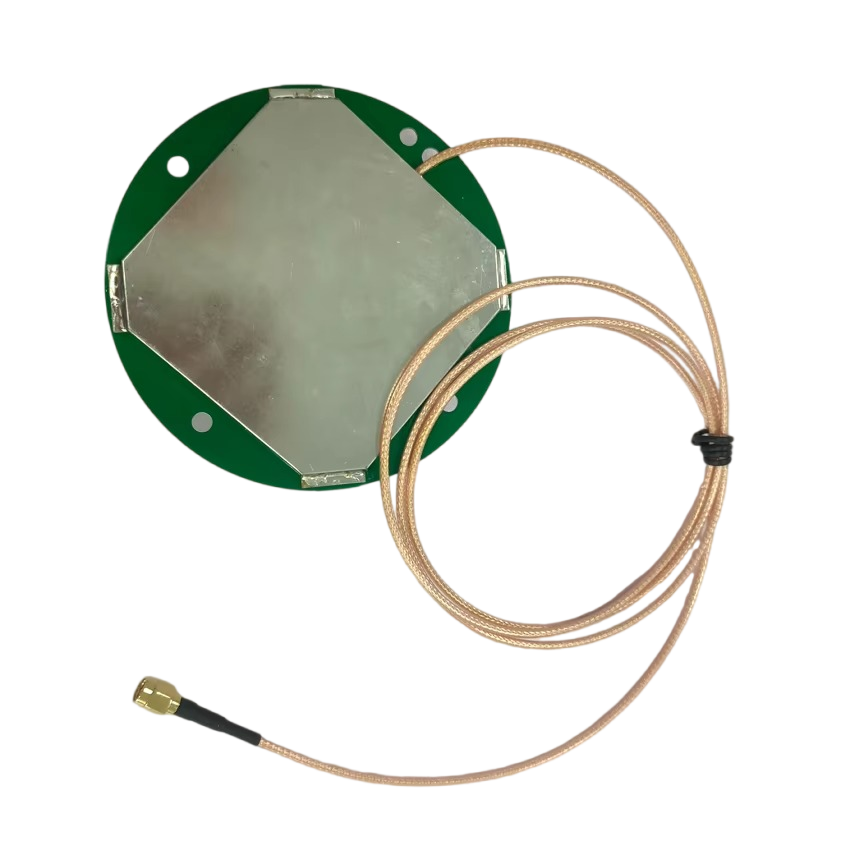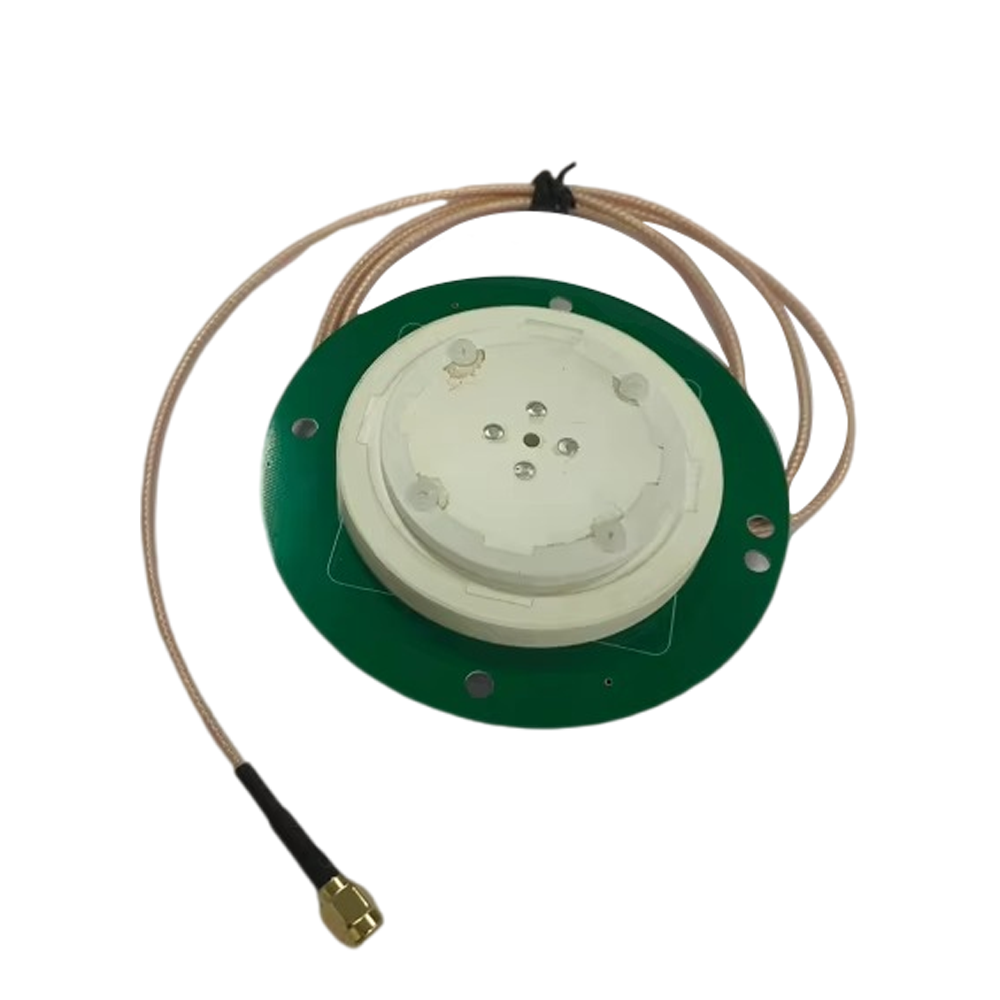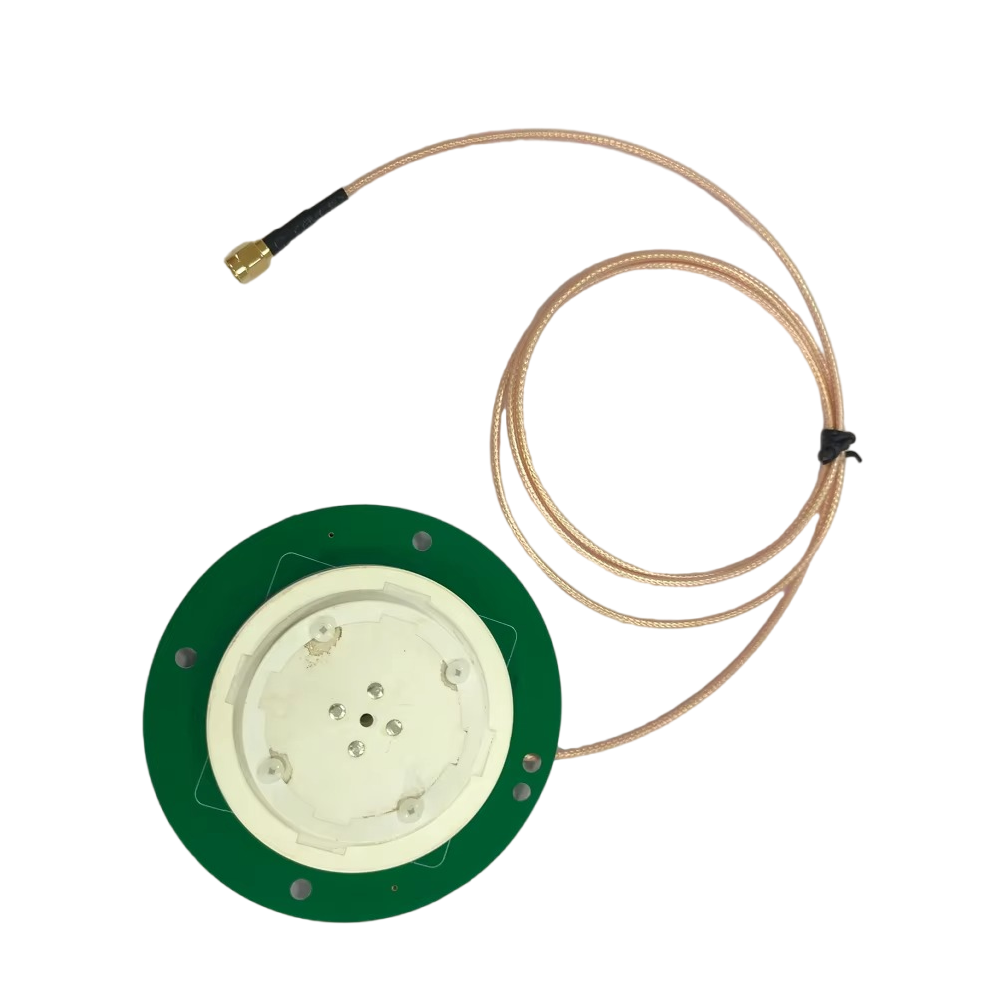Applications
RTK combination antennas are deployed in diverse applications where precision positioning and connectivity are equally critical:
Drone Surveying and Mapping: Drones equipped with these antennas combine centimeter-level positioning with real-time data transmission. For example, a survey drone can capture aerial images, geotag them with precise coordinates using the GNSS module, and transmit the images and position data via 4G/5G to a ground station for immediate processing. This eliminates the need to retrieve the drone to access data, accelerating project timelines.
Autonomous Vehicles and Machinery: Construction vehicles, agricultural tractors, and autonomous robots use combination antennas to navigate with precision while communicating with a central system. A bulldozer, for instance, can use RTK to follow a precise grading path and transmit its position and progress via radio or Wi-Fi to a site management system, allowing supervisors to monitor operations remotely.
Precision Agriculture: In farming, these antennas enable tractors and harvesters to navigate fields with centimeter accuracy (using RTK) while sending data on crop yields, soil conditions, or equipment status to a farm management platform via 4G. This integration supports precision application of inputs and real-time adjustments to farming operations.
Infrastructure Monitoring: Bridges, railways, and pipelines are monitored using sensors connected to combination antennas. The antennas provide precise location data for sensor readings (e.g., vibration, temperature) and transmit this data via cellular or radio networks to a monitoring system. This allows engineers to detect small movements or anomalies in real time, enabling proactive maintenance.
Search and Rescue Operations: Rescue teams use portable devices with combination antennas to navigate disaster zones with precision (using RTK) while communicating with command centers via radio or satellite. This ensures that teams can locate survivors accurately and coordinate efforts efficiently, even in areas with damaged infrastructure.
Future Trends
The development of RTK combination antennas is driven by advances in wireless communication, miniaturization, and AI, with several key trends emerging:
Integration of More Bands and Technologies: Future antennas will support an even broader range of frequencies, including new GNSS bands (e.g., Galileo E6, BeiDou B3) and 5G mmWave for ultra-fast data transmission. They may also integrate satellite communication (e.g., Iridium, Starlink) for global connectivity in remote areas, eliminating reliance on terrestrial networks.
AI-Driven Interference Mitigation: Artificial intelligence will enable antennas to dynamically detect and mitigate interference. Machine learning algorithms will analyze signal patterns to identify sources of interference (e.g., a nearby radio tower) and adjust filters or radiation patterns to minimize its impact, improving both GNSS and communication performance.
Energy Harvesting and Low-Power Operation: To extend battery life in portable applications, combination antennas will integrate energy harvesting technologies, such as solar cells or RF energy scavengers, to power their electronics. Low-power communication protocols (e.g., LoRaWAN) will also be incorporated, reducing energy consumption during data transmission.
Modular and Reconfigurable Designs: Future antennas may feature modular components that can be swapped to support different frequency bands or technologies, allowing users to customize the antenna for specific applications. Reconfigurable elements, controlled by software, could adjust radiation patterns or frequency ranges on the fly, adapting to changing environments.
Enhanced Integration with Sensors: Combination antennas will increasingly integrate with other sensors, such as IMUs (Inertial Measurement Units), LiDAR, or cameras, creating all-in-one systems that provide positioning, communication, and environmental data. This sensor fusion will improve accuracy in GNSS-denied environments and enable more comprehensive data collection.
Conclusion
RTK combination antennas represent a significant advancement in geospatial technology, merging high-precision positioning with seamless communication to meet the demands of modern workflows. By eliminating the need for separate antennas, they reduce complexity, weight, and costs while ensuring reliable performance in diverse applications—from drone surveying to autonomous machinery. Their ability to simultaneously process GNSS signals for centimeter-level positioning and transmit/receive data via multiple communication bands makes them indispensable in an increasingly connected world.
While challenges such as performance trade-offs and design complexity persist, ongoing innovations in interference mitigation, AI, and modular design are addressing these limitations. Future antennas will support more bands, integrate with additional sensors, and adapt dynamically to changing conditions, further expanding their utility. As industries continue to demand real-time, high-precision data, RTK combination antennas will play a central role in enabling efficient, connected, and accurate geospatial operations.
In essence, RTK combination antennas are more than just technical integrations—they are enablers of a new era in geospatial technology, where precision and connectivity work in harmony to drive productivity, safety, and innovation across industries. Their evolution will continue to shape how we collect, process, and act on geospatial data, unlocking new possibilities in mapping, monitoring, and automation.




































































 Language
Language
 En
En Cn
Cn Korean
Korean

 Home >
Home > 







 18665803017 (Macro)
18665803017 (Macro)













